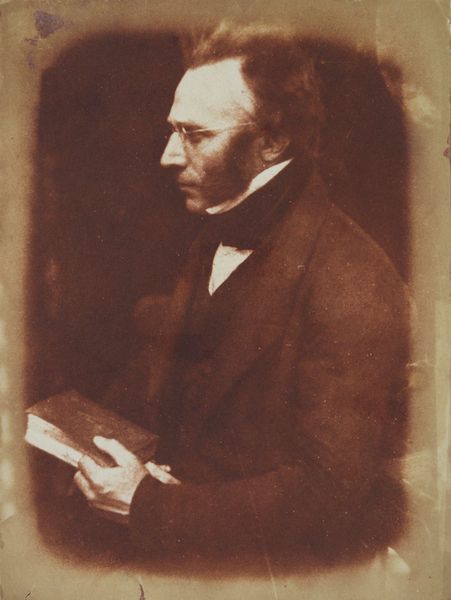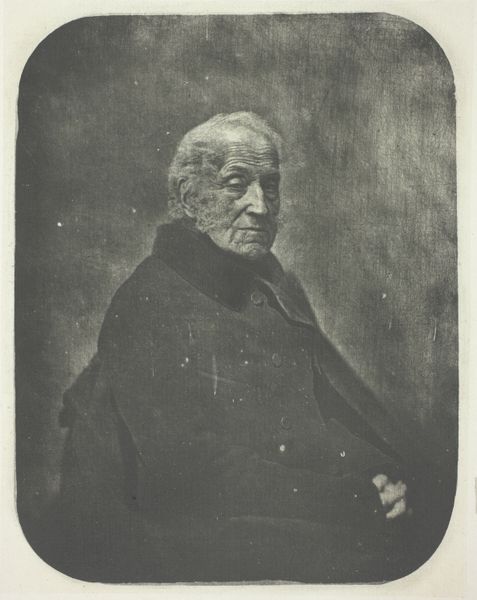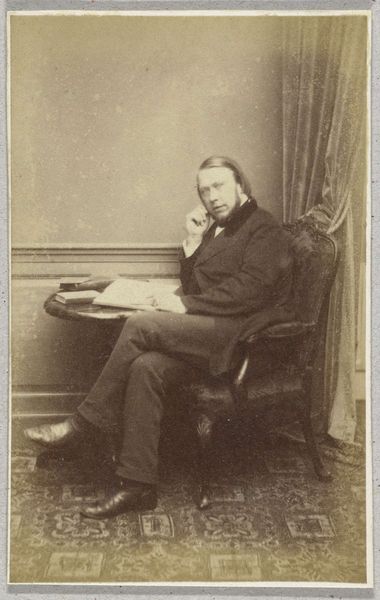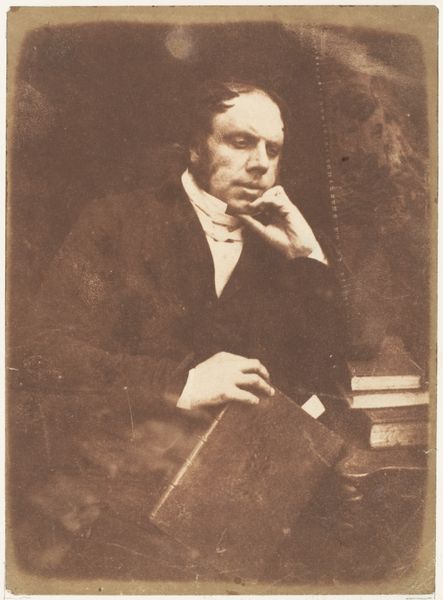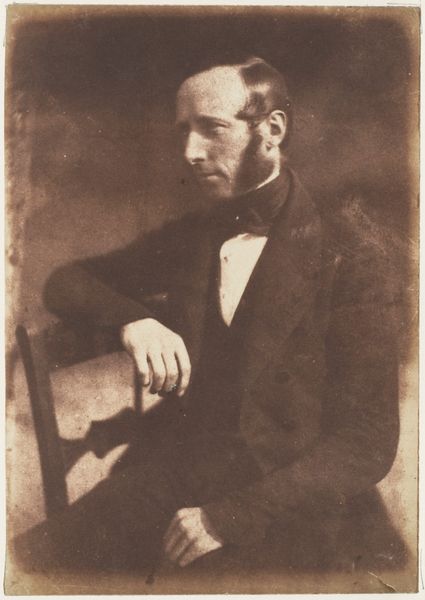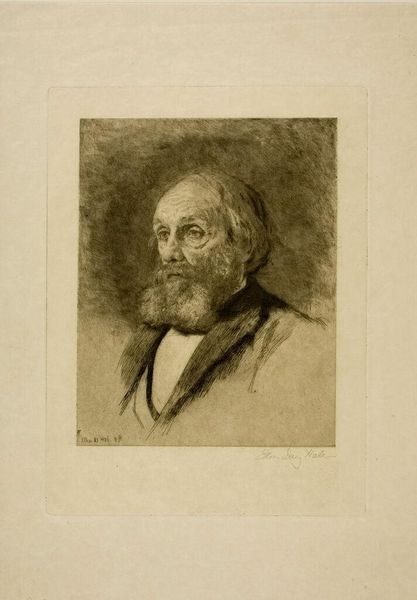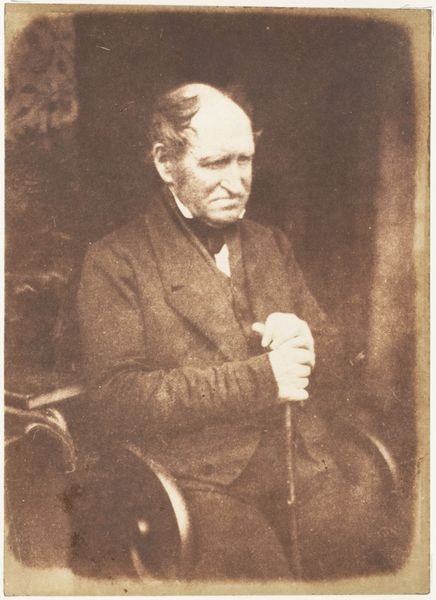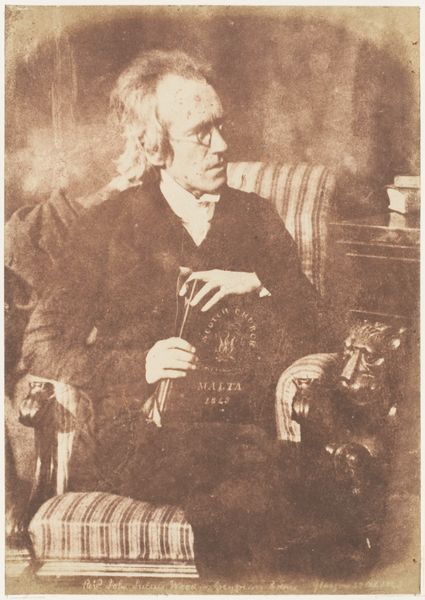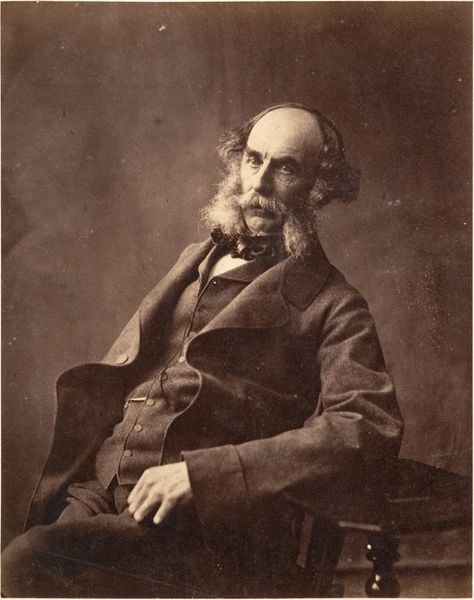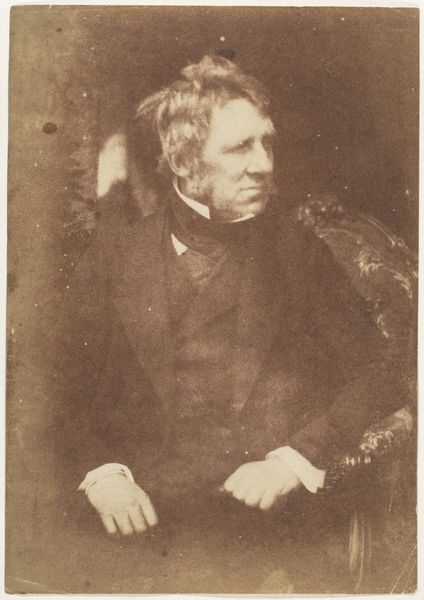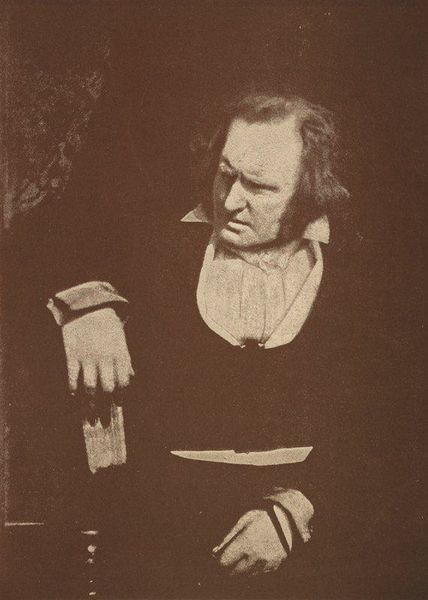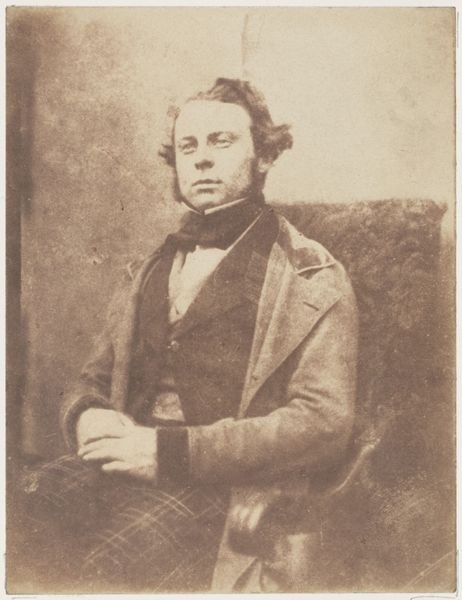
photogravure, photography, gelatin-silver-print
#
portrait
#
photogravure
#
photography
#
romanticism
#
gelatin-silver-print
#
realism
Dimensions: 7 7/8 x 5 7/8 in. (20 x 14.92 cm) (image)
Copyright: No Copyright - United States
Curator: So, here we have David Octavius Hill's "The Marquis of Northampton," a gelatin-silver print from circa the 19th century, currently residing at the Minneapolis Institute of Art. What springs to mind for you? Editor: Shadows. It's like he’s emerging from the depths, a kind of photographic haunting. The somber tones seem perfectly matched to his, shall we say, intensely dignified expression. Curator: It's intriguing to see how early photography grappled with portraiture, right? Hill's work here can be seen as challenging the conventions of painted portraiture, which historically served as markers of status and power. Instead, this feels rawer, less polished. Editor: Absolutely. The light, though moody, feels very revealing. It isn’t trying to flatter or idealize; it’s just…there. Stripping away artifice seems to be its intention, however unintentional that was on the part of Hill, I suppose. Does this represent democratization somehow, I wonder? Curator: Precisely! That's very astute. The accessibility of photography, relative to painting, did open up representation to a wider range of sitters, beyond just the elite. Although the process was still quite involved and certainly not available to the working classes! Images like this one could then be reproduced and circulated, influencing public perception. It changed the whole game, from who was being portrayed to how images were consumed. Editor: Still, there’s something enduring here beyond its historical weight. His posture—the set of his jaw. He seems resigned, but not defeated. Is it possible to project some sort of artistic intention here, where none may exist? This is a capture of a real man. Maybe what captivates us, or at least captivates me, is something inherent and true? Curator: It also reflects broader societal changes during the 19th century, right when notions of identity, class, and representation were being redefined through political movements, reform, revolution. We see this captured, or refracted in the photograph through pose, through the clothing of this very individual. Editor: So, we see this man as situated, essentially. An object in history. Whereas maybe I’m looking for a subjective presence…but then again, that too must be culturally determined to some degree. Curator: Well, it highlights how art is never created or consumed in a vacuum. So what do we take away here? Editor: That even still images contain within themselves constant motion, always pushing into an uncertain future, while maintaining a tenuous grip on the past. Curator: For me it's that art always serves as a window onto our history.
Comments
No comments
Be the first to comment and join the conversation on the ultimate creative platform.
